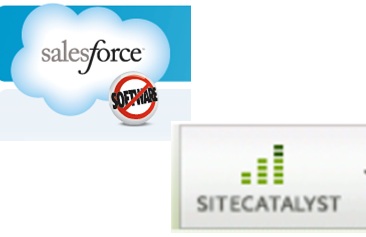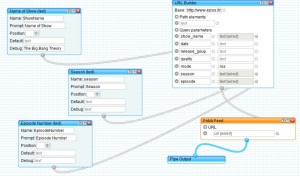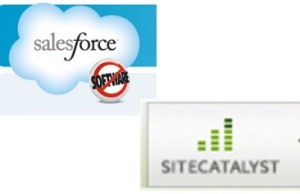Salesforce integration with SiteCatalyst through Genesis: Why, How and What

This week we’ve been looking at how we do a SalesForce integration with SiteCatalyst, so I thought I’d write a post about the benefits and how it works in a no way predictable theme to the posts on this blog. Funnily enough though (in a no way predictable second sentence to this post), I have written about this sort of shenanigans before. In fact it wasn’t long ago when I was listing five tips for Lead generation web analysis. It was a little while ago that I was talking about databases and SiteCatalyst, which is kind of essential to this process.
Why do a SalesForce integration with SiteCatalyst?
Did you read those five tips for lead generation? Why not? Go back and read it. I’ll wait here.
Ok, well I came up with four tips and a fifth one that I said don’t bother with. The fifth one was this one we’re talking about.
Ah.
This is embarrassing.
Seriously though, most of the time this probably won’t work.
So why would you do this integration? Well with SalesForce and SiteCatalyst it is possible that you can integrate your data in a way that will make it hugely beneficial for you if you can make use of the insight. It will give you the information to be able to work out if your marketing is making you money and will give you real insight as to whether changes to the website are making money otherwise you are just guessing.
Those of you who use Salesforce will be more aware of the benefits. SalesForce is a customer relationship managment tool that allows you to track all the interactions of your leads online and offline (if you set it up in that way). If your revenue doesn’t come in a direct fashion from your website then it is a great tool to not just manage each of the interactions of the customer, but also to track how much profit you are making from each customer.
So if you have all your revenue figures in one system and all your traffic in another, it would be great if you could link them up to do that deep analysis. Otherwise you are going to have to either assume an average order value in SiteCatalyst (and if the order value varies wildly, then this can be very misleading) or you’ll have to assume an average marketing cost across all your revenues (which could be equally misleading).
How does it work?
Well in those five tips on lead generation numbers three and four were to put more data in your analytics system and to put more data in your sales funnel. It turns out that if you do both of these then you can almost create a unique identifier for your data (called a key). This will allow you to link your two data sources together.
So what you do is you alter your code on your page to collect a couple of new variables which can also be picked up by your sales system. These are effectively unique identifiers that allow you to link together tables that previously didn’t have common elements.
 |
| Yahoo Pipes shows how you can link up database fields to come up with a single, joined up output |
So you create some new fields in Salesforce that allows you to do a bit more with the data from SiteCatalyst – however this is a difficult process in Salesforce. For it to work properly, you really need to collect information from the beginning of the visit. This may mean that you’ll end up with more data in Salesforce than you know what to do with.
A better way of doing it is to use the Salesforce API to insert the data into SiteCatalyst. It’s a much smaller dataset that you’ll be adding, even if it does have to be dynamically updated by Salesforce over time. This is fine though, because SiteCatalyst can allow that to happen.
What about the different data filters?
One of the main difficulties is that the two systems have different filters set up. SiteCatalyst is set up to remove robots, spiders and general things that don’t look like people. It will also be excluding a bunch of people who don’t want to be tracked because of blocking cookies and/or javascript. You may also filter out your internal people.
In Salesforce you are probably filtering in a slightly different way. You may be excluding users who look fraudulent, those that sign up but never buy, etc. Those set up internally by sales support may still be included.
You are definitely going to end up with some of your salesforce that can’t be linked to data in SiteCatalyst. You are also going to have to accept that you are going to end up with SiteCatalyst data that has subsequently been removed from Salesforce. The trick is working out how much of it and what to do about it.
So one of the early steps in the process is definitely data ‘cleansing’. You need to go through the two data sets and work out if there is a massive difference. You’ll need to look through those that don’t match up and try and work out why. This is always easier in Salesforce, but you may have to look at any bespoke SiteCatalyst filtering you have set up.
Data Classification is vital
I think this is one thing that I constantly mention. And it is so easy to do. Classify your data in SiteCatalyst. Why? Because you don’t want to have to create too many tables in Salesforce and SiteCatalyst capturing the same data in different ways. Capture it once, classify it into many different data sets.
The other advantage of classification is that you can collect data in a computer language and subsequently turn it into a human language that the user may be able to use.
Use Genesis
Any how could I forget this point? Omniture/Adobe have already done this, so the actual data integration is a ‘simple’ case of mapping the two data sets within Genesis. Of course you’ll need to do a bit of work first to make sure that the integrations can work.
You’ll need a Salesforce expert on hand to be able to tell you the names of fields.
You’ll need a SiteCatalyst expert to work out the spare variables and events. They’ll then be able to advise on the reports that you should look at, the points that you can do correlations between tables, etc.
You’ll also need someone who can take action on all this insight so that you can make your company more money.


In case it is of interest, I have covered this topic extensively in these 3 posts:
http://adam.webanalyticsdemystified.com/2010/05/10/crm-integration-passing-web-analytics-data-to-crm/
http://adam.webanalyticsdemystified.com/2010/05/17/crm-integration-2-passing-crm-data-to-web-analytics/
http://adam.webanalyticsdemystified.com/2010/05/24/crm-integration-3-passing-crm-meta-data-to-web-analytics/